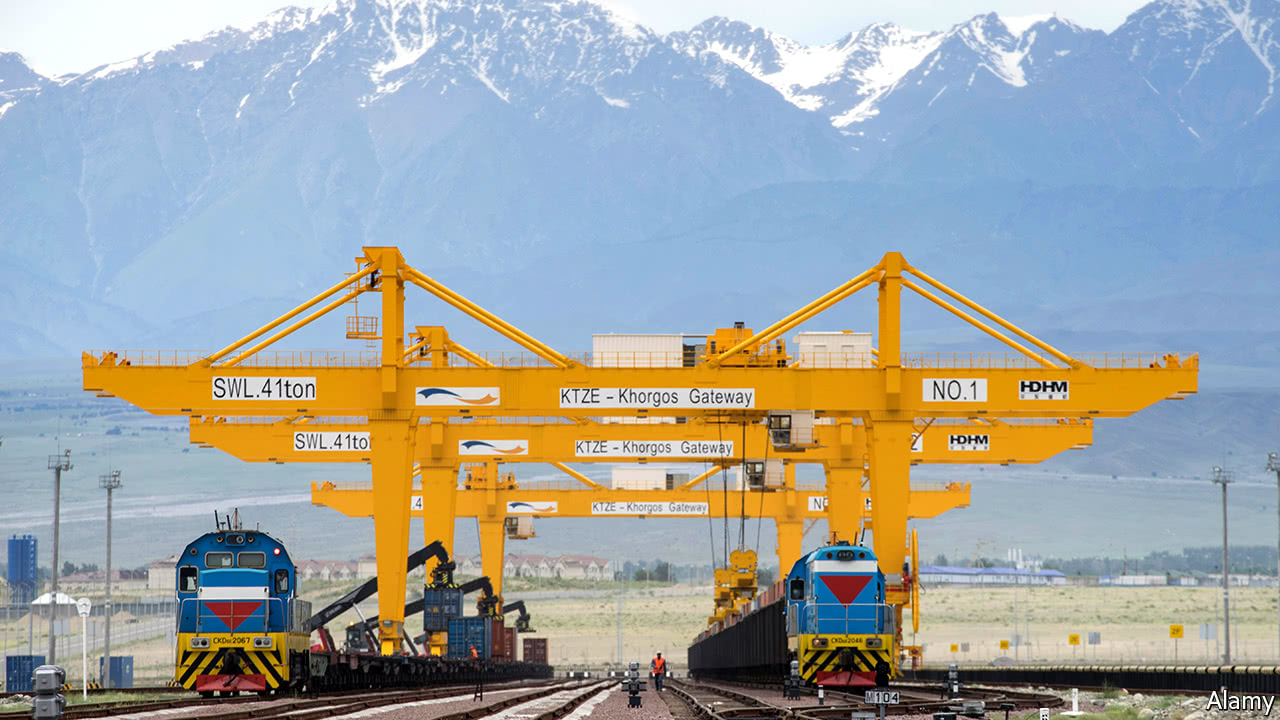 How might the states of Central Asia and the Caucasus benefit from China’s grand new investment initiative?
How might the states of Central Asia and the Caucasus benefit from China’s grand new investment initiative?
IN THE days when the Silk Road linked China to Europe, merchants would crisscross Eurasia, stopping at the caravanserais that had sprouted up across Central Asia and the southern Caucasus. But as trade came to rely more on shipping, land routes fell out of favour and many Eurasian hubs floundered. A stream of projects launched in 2013 by the Chinese president, Xi Jinping, may change that. The so-called “Belt and Road Initiative” (BRI) aims to improve trading and transport links between China and the world, mostly through infrastructure investments. It promises to revive the fortunes of ex-Soviet states. But what do these countries stand to gain from a flow of what will be predominantly Chinese goods?
The scale of the initiative is enormous. So far China is estimated to have underwritten over $900bn of loans—some on concessionary terms, many on commercial terms—in 71 countries, ranging from Poland to Pakistan. Many projects are under way. Kazakhstan has opened a massive dry port on its eastern border with China. Its seaports on the Caspian sea are also being expanded, and east-west rail and road connections are being upgraded. On the other side of the Caspian, Azerbaijan and Georgia hope to capture some of the flow of Chinese goods to Europe via the Baku-Tbilisi-Kars railway, which opened last year, and Georgia has secured $50m in Chinese investment in a proposed deep-sea port on the Black Sea. Other countries are jockeying to attract Chinese attention for BRI projects. Last November the Georgian government held its second biennial Tbilisi Belt and Road Forum, in which delegations from Europe, the Middle East and Central Asia presented historical trade route maps as part of their efforts to earn a place on this 21st-century Silk Road, with all the accompanying Chinese investment.
Underlying such machinations lies the assumption that the BRI will deliver a host of lucrative spillover effects to the transit countries. Many have underdeveloped or poorly maintained infrastructure. The economic benefits of a new motorway, railway or port for the hospitality, industrial or retail sectors seem clear enough. Such developments should make trading between neighbours easier—something that Kazakhstan and Uzbekistan have already been taking advantage of. And governments like to take credit for shiny new infrastructure projects without having to raise revenue to pay for them or subject themselves to conditions set by Western investors or multilateral organisations.
But worries persist. China supplies the workers to carry out the projects, limiting the scope for local involvement. Transit countries are likely to keep trade tariffs to a minimum to stop China using different, cheaper routes for its goods, but this limits opportunities to raise revenue. Furthermore, BRI countries claim that their nascent manufacturing sectors can be integrated into the Chinese value chain so that, for example, machine parts made in China could be assembled in Kazakhstan. But manufacturing sectors across the former Soviet Union are uncompetitive and businesses complain of shortages of skilled labour. Most worryingly, perhaps, countries along the route are already heavily indebted. If the returns on BRI investment prove underwhelming, they could struggle to repay China’s loans and to pay for maintenance, and bilateral relations could sour. This modern Silk Road might end up being less renowned for the spread of prosperity than its forebear.
The Economist, Apr 19th 2018




